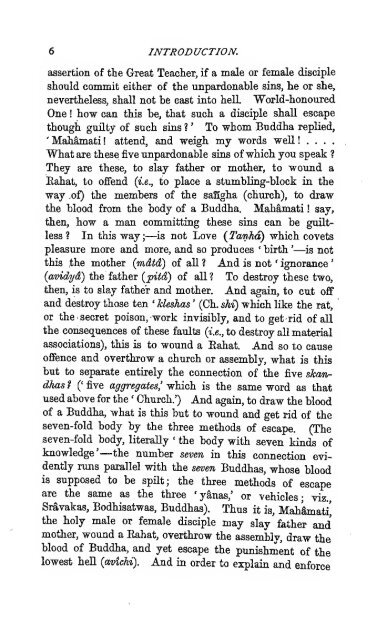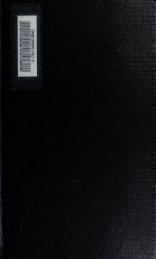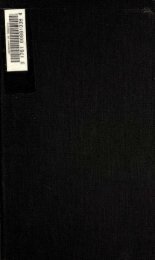Texts from the Buddhist canon : commonly known as Dhammapada
Texts from the Buddhist canon : commonly known as Dhammapada
Texts from the Buddhist canon : commonly known as Dhammapada
You also want an ePaper? Increase the reach of your titles
YUMPU automatically turns print PDFs into web optimized ePapers that Google loves.
6 INTRODUCTION.<br />
<strong>as</strong>sertion of <strong>the</strong> Great Teacher, if a male or female disciple<br />
should commit ei<strong>the</strong>r of <strong>the</strong> unpardonable sins, he or she,<br />
never<strong>the</strong>less, shall not be c<strong>as</strong>t into hell. World-honoured<br />
One ! how can this be, that such a disciple shall escape<br />
though guilty of such sins ? ' To whom Buddha replied,<br />
' Mah§,mati ! attend, and weigh my words weU. ! . . . .<br />
What are <strong>the</strong>se five unpardonable sins of which you speak ?<br />
They are <strong>the</strong>se, to slay fa<strong>the</strong>r or mo<strong>the</strong>r, to wound a<br />
Eahat, to offend (i.e., to place a stumbling-block in <strong>the</strong><br />
way .of) <strong>the</strong> members of <strong>the</strong> saSgha (church), to draw<br />
<strong>the</strong> blood <strong>from</strong> <strong>the</strong> body of a Buddha. Mah§,mati ! say,<br />
<strong>the</strong>n, how a man committing <strong>the</strong>se sins can be guilt-<br />
less ? In this way;—^is not Love (Tanha) which covets<br />
ple<strong>as</strong>ure more and more, and so produces ' birth '—is not<br />
this <strong>the</strong> mo<strong>the</strong>r (mdtd) of all ? And is not ' ignorance<br />
{avidydb) <strong>the</strong> fa<strong>the</strong>r {pitd) of all ? To destroy <strong>the</strong>se two,<br />
<strong>the</strong>n, is to slay fa<strong>the</strong>r and mo<strong>the</strong>r. And again, to cut off<br />
and destroy those ten ' Mesh<strong>as</strong> ' (Ch. shi) which like <strong>the</strong> rat,<br />
or <strong>the</strong> secret poison, work invisibly, and to get rid of aU<br />
<strong>the</strong> consequences of <strong>the</strong>se faults (i.e., to destroy aU material<br />
<strong>as</strong>sociations), this is to wound a Eahat. And so to cause<br />
offence and overthrow a church or <strong>as</strong>sembly, what is this<br />
but to separate entirely <strong>the</strong> coimection of <strong>the</strong> five skan-<br />
dh<strong>as</strong> ? (' five aggregates,' which is <strong>the</strong> same word <strong>as</strong> that<br />
used above for <strong>the</strong> ' Church.') And again, to draw <strong>the</strong> blood<br />
of a Buddha, what is this but to wound and get rid of <strong>the</strong><br />
seven-fold body by <strong>the</strong> three methods of escape. (The<br />
seven-fold body, literally ' <strong>the</strong> body with seven kinds of<br />
knowledge'—<strong>the</strong> number seven in this connection evi-<br />
dently runs parallel with <strong>the</strong> seven Buddh<strong>as</strong>, whose blood<br />
is supposed to be spHt; <strong>the</strong> three methods of escape<br />
are <strong>the</strong> same <strong>as</strong> <strong>the</strong> three 'y^n<strong>as</strong>,' or vehicles; viz.<br />
Sravak<strong>as</strong>, Bodhisatw<strong>as</strong>, Buddh<strong>as</strong>). Thus it is, Mah'amati'<br />
<strong>the</strong> holy male or female disciple may slay fa<strong>the</strong>r and'<br />
mo<strong>the</strong>r, wound a Eahat, overthrow <strong>the</strong> <strong>as</strong>sembly, draw <strong>the</strong><br />
blood of Buddha, and yet escape <strong>the</strong> punishment of <strong>the</strong><br />
lowest hell {avichi). And in order to explain and enforce<br />
'





